Winter can be a difficult time for birds, especially in northern climates when food supplies are limited and temperatures drop well below freezing. I live in Minnesota and it’s not uncommon to see “feels like” temperatures dip to -30 or -40 in January and February.
While birds are resilient and usually have the tools to survive the coldest weather, we can do a few things to give birds a helping hand to make it through the winter season.
From providing helpful food sources to creating warm places to roost, there are several things you can do to assist your local birds in getting through the bone-chilling winter. Here are five potential avenues you can explore. You don’t have to do all of them! Just taking a step or two can help.
Sources for this article: The Cornell Lab, The U.S. Fish and Wildlife Service, and my own firsthand experience from years of bird feeding in Minnesota!
Disclaimer: Some links found on this page are Amazon affiliate links. If you click an affiliate link and make a purchase, I might earn a commission. As an Amazon Associate I earn from qualifying purchases. (There’s no extra cost to you if you do this).
1. Offer High Fat Foods to Help Birds
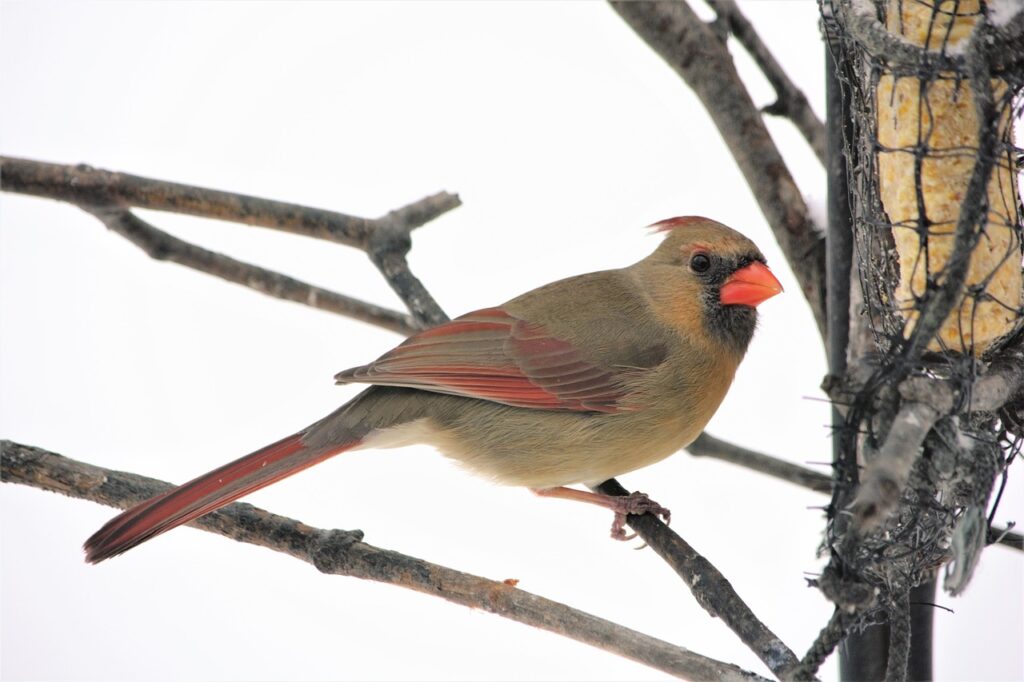
High-fat foods are especially valuable for birds in the winter as they seek fuel to keep warm and survive. Three great options you can turn to are black oil sunflower seed, suet and peanuts.
If you’re starting from scratch, black oil sunflower seed will appeal to the widest variety of birds and tends to be one of the more affordable bird seed varieties. A tube, tray, or hopper feeder are all great options for offering sunflower seed.
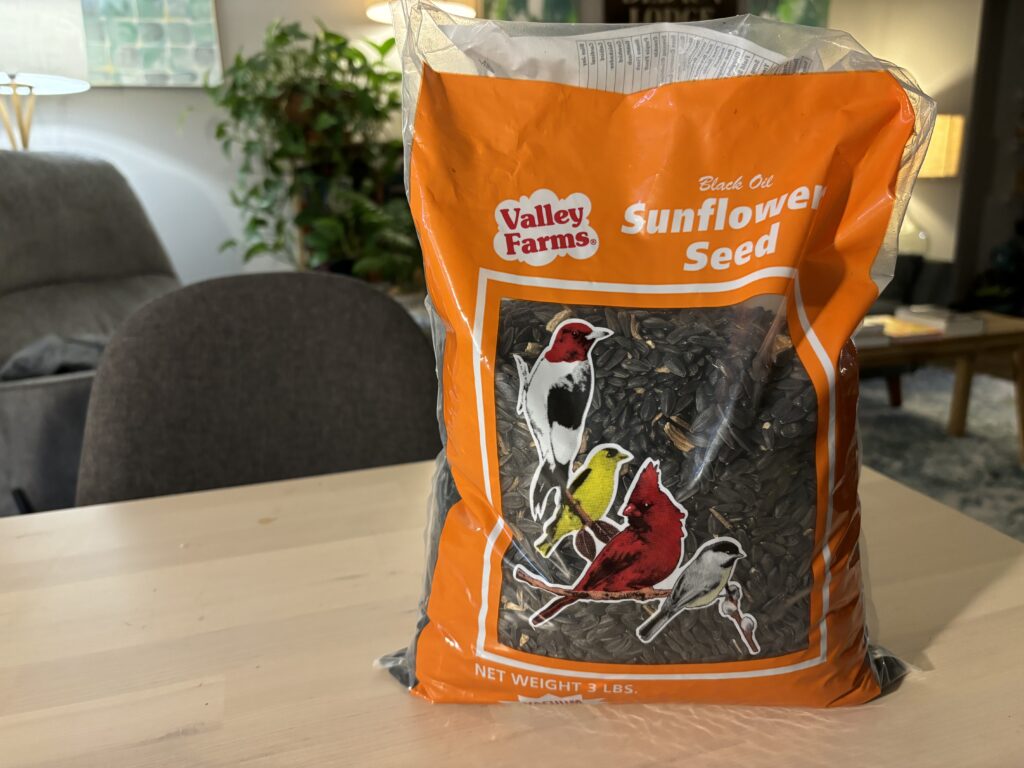
I love suet for bird feeding. It’s a simple way to draw in woodpeckers on the regular. Chickadees, Nuthatches, and Sparrows also like it at my birch log feeder. Suet is made of hardened animal fat, making it an appealing energy source for birds in the fall and winter.
Suet is also cheap. It costs $1 to $5 for a cake of it, which usually lasts me for a couple of weeks. The cheapest and easiest way to offer suet is with blocks in a suet cage.
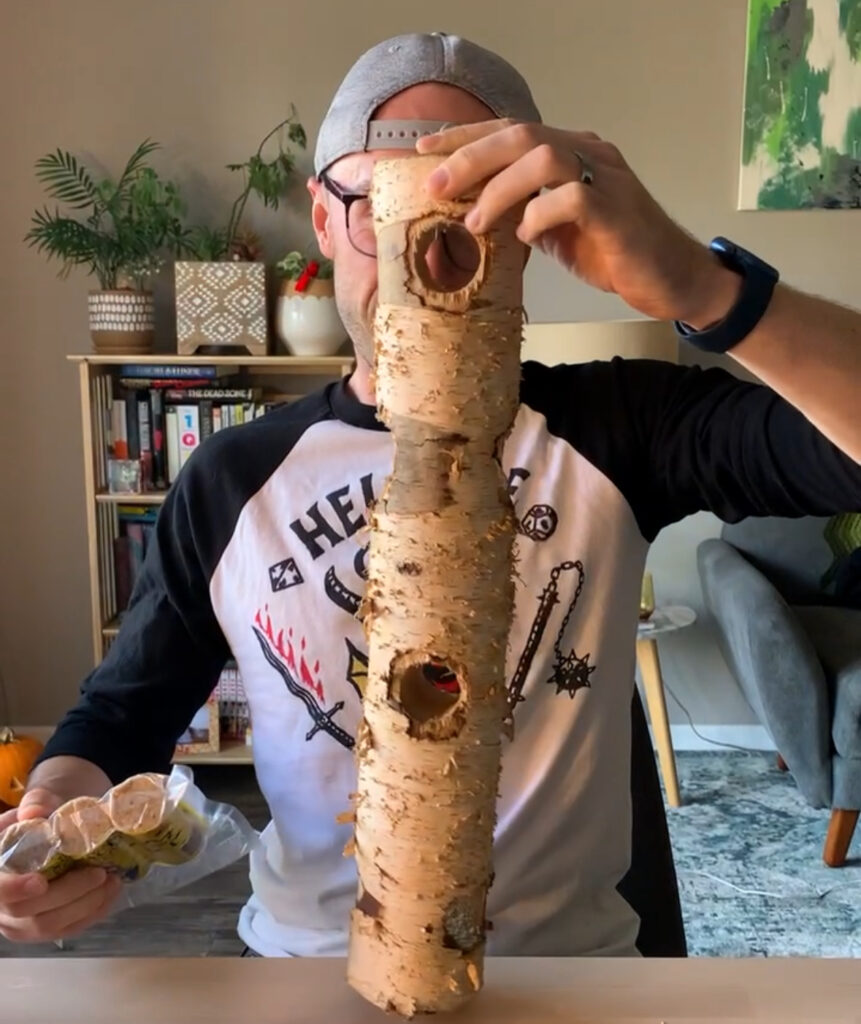
Peanuts are high in protein and fat – both essential and important for birds in the winter. They’ve quickly become one of my favorites to offer to birds this time of year. I have the highest variety and number of birds at my station when I’m offering peanut bits in a separate feeder.
Side note: If you like feeding squirrels during the winter. You can’t beat this option for them. Consider offering some on a ground feeder as a treat when the weather gets tough.
Related Content: Ranking Bird Seed from Worst to Best
2. Offer Shelter to Help Birds in the Winter
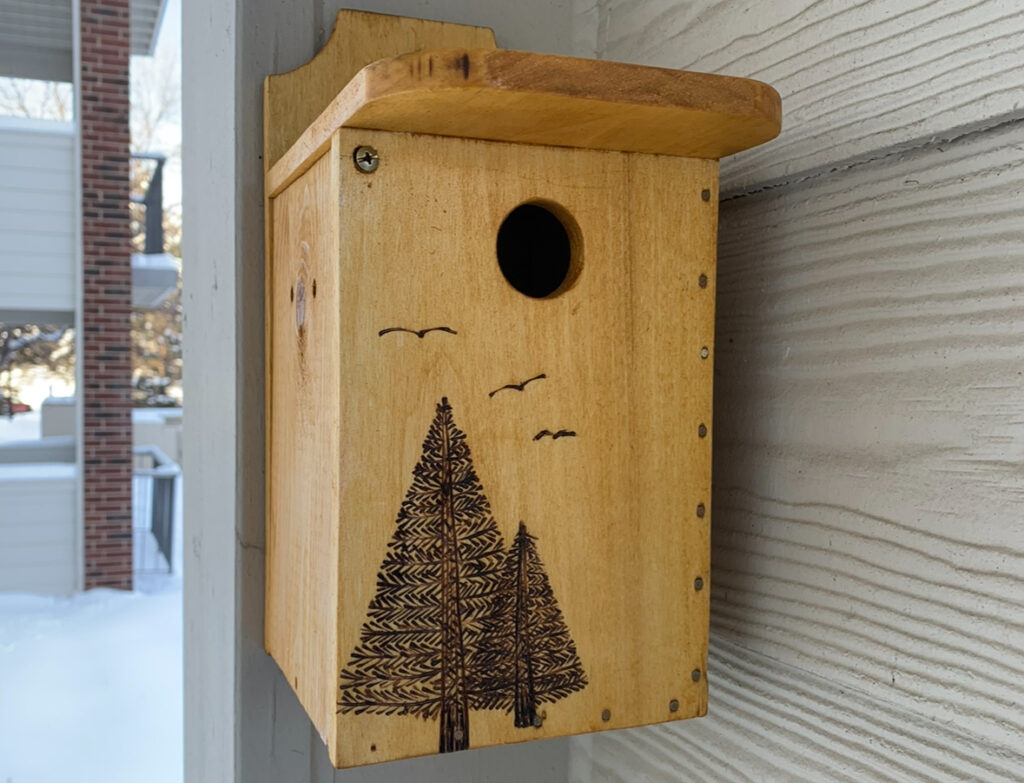
When the wind picks up and the temperature drops, birds often seek spaces and crevices out of the elements to hunker down in.
If you have a yard, one way to offer natural shelter for birds is by creating a brush pile. This can be as big or small as you’d like. Simply stack sticks, logs and/or other brush from your yard to provide spaces for the birds to hang out in.
While usually top of mind in the spring nesting season, bird houses and nesting boxes can also be appealing options for birds to seek shelter or roost in. Try to hang nest boxes in spaces where predators won’t get to them, or on a pole with a baffle. 10+ feet in the air is ideal.
You can take your winter birdhouses to the next level by adding in some dry insulation like wood chips, dry sticks or hay.
3. Put Out a Heated Bird Bath
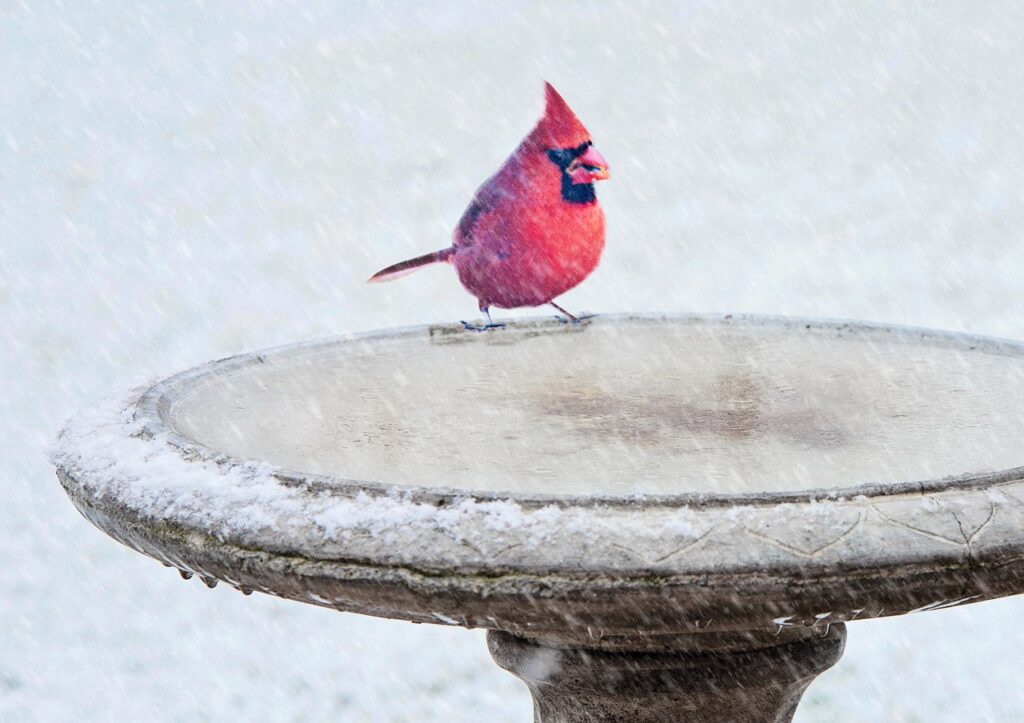
Want to know the secret to attracting more birds to your yard all while giving them a valuable resource? Water in a heated bird bath is something nearly every species of bird will take interest in during the winter!
A heated bird bath is especially welcome when it’s cold out and lakes/ponds are frozen. Open water is hard to come by!
Be sure to change the water out every two to three days and clean your bird bath at least every other week to prevent the spread of bacteria and viruses among birds.
4. Take Part in Community Science Bird Counts
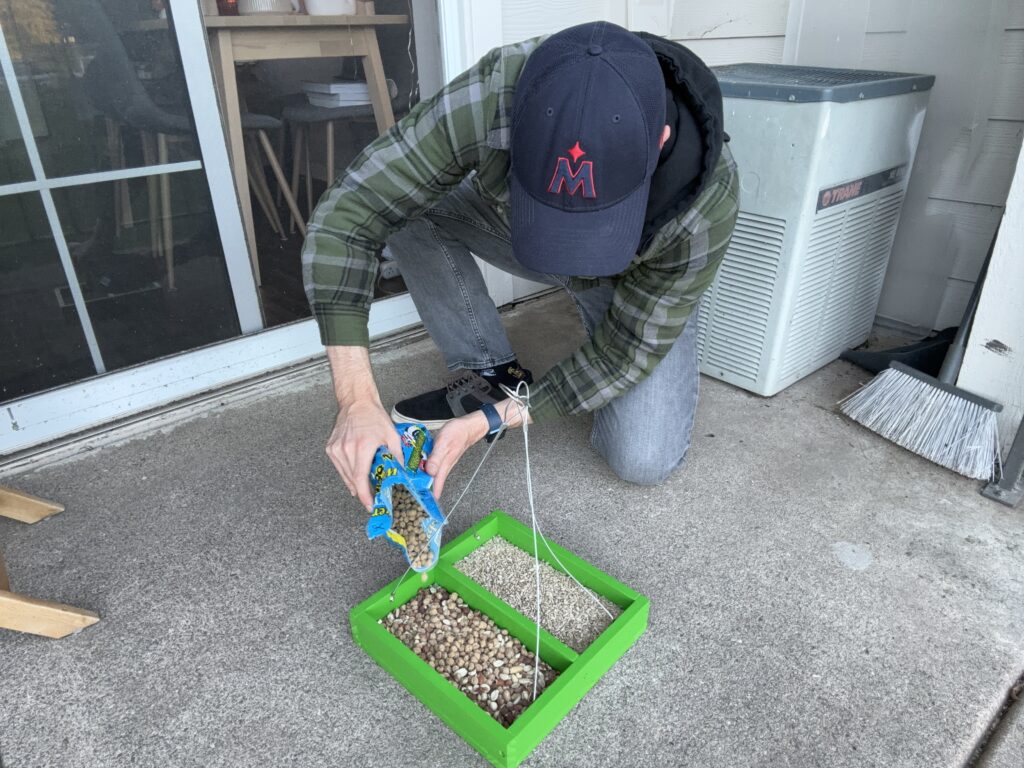
Counting birds in your yard through a community project is a simple, fun way to contribute towards valuable scientific data on backyard birds. Volunteers count birds in their yard or a specific location for a certain amount of time, and the data is collected and utilized by experts and scientists. There are several projects and events you can take part in each winter:
- Project FeederWatch (Cornell) – I’ve taken part in this project the past two years. It’s a fun bird count project that has its own digital app for bird counting. Super engaging and easy. Costs $15-$20 to sign up and you receive bird data materials and a calendar.
- The Great Backyard Bird Count (Cornell) – This project happens for a few days in February each year. Free to take part in through the Merlin Bird ID app.
- The Christmas Bird Count (Audubon) – Occurs December 14 to January 5 every year.
Related Content: How to Save Money While Bird Feeding
5. Put In Native Plants and Trees in Your Yard

When it comes to helping birds survive the harsh winter months AND year-round, there’s no better way than by planting native plants and trees in your yard.
Not only do native plants and trees give birds a valuable habitat where they can find food and shelter, but they also offer much-needed protection from extreme weather often present during the winter. Plus, native plants and trees can provide nesting materials for birds in spring as well as countless other year-round benefits for you, such as improved air quality, soil stability, and enhanced property value.
I have two large pine trees near my apartment balcony and bird feeders. This is often a “home base” for my local birds to roost overnight and take shelter during the day. It has plenty of space for them to take shelter in.
Wrapping Up
The winter months are a difficult time for birds, with food and shelter in short supply. So, by taking some simple steps to help them out, such as leaving bird feeders stocked, or putting up nesting boxes, we can give them a helping hand.
Leave a comment below if you have questions or if you found this article helpful!

Pingback:Five Heated Bird Baths to try in the Winter - BIRD BITES